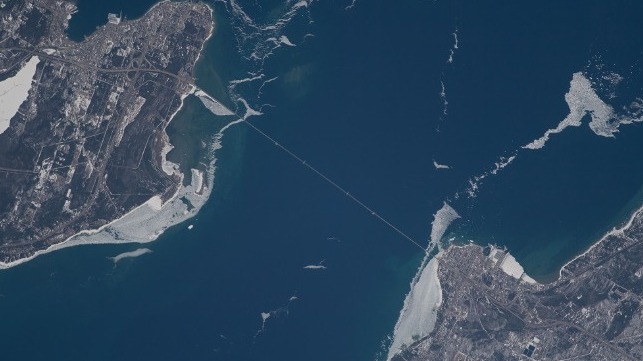Michigan Governor Seeks to Close Pipeline Across Strait of Mackinac

A political standoff is underway between Canada and the State of Michigan. The state governor has ordered the closure of a pipeline that carries crude oil and natural gas from Superior, Wisconsin to the Canadian city of Sarnia on the St. Clair River, leading to a court dispute and diplomatic talks between the Canadian federal government and officials in Washington.
In practical terms, the closure of the pipeline would leave maritime and truck transportation as the main possible options, with the railway option being doubtful.
Introduction
The governor of the State of Michigan, Gretchen Whitmer, seeks to close a 68-year-old underwater pipeline that carries oil and natural gas due to concerns of a possible future oil leak that could contaminate the environment - and especially the section that passes under the Strait of Mackinac, located between Lakes Huron and Michigan. The most heavily populated region of Canada depends on that pipeline delivering crude oil to the refinery at Sarnia, where it is refined to produce a variety of products.
Railway transportation of fuel between Superior and Sarnia is possible but doubtful. The most direct railway routes cross through Michigan, and the threat of a derailment and related environmental contamination would likely attract the governor’s attention. During July 2013, a tanker train carrying crude oil derailed at the town of Magog in Quebec, with disastrous results. Oil tanker trains would have to travel an added distance to bypass the state of Michigan and incur higher per barrel transportation cost. Carrying oil by truck transportation between Superior and Sarnia via an indirect route that bypasses Michigan would be wholly uneconomical.
The maritime option
The city of Superior, WI is located next to the Great Lakes port city of Duluth, Minnesota, and both cities have quaysides capable of berthing the largest ships that sail on the Upper Great Lakes. Ships sailing between Lake Superior and Lake Huron have to transit through the Soo Locks, located at the northern end of the city of Sault Ste. Marie, Michigan. While the navigation locks are under the jurisdiction of the U.S. Department of Transportation, the possibility of tanker ships carrying crude oil passing through the Soo Locks would likely attract the attention of Michigan’s governor.
The Canadian intermodal option
A railway line connects between the Canadian city of Sault Ste. Marie and towns along on the North Channel of Lake Huron, allowing a convoy of oil tanker trains to operate along that stretch of railway line until a section of oil pipeline is installed. The trains would connect with a super-size oil tanker ship at the west end of the railway line with the option of connecting to a section of submerged pipeline between the Town of Desbarats and an offshore oil terminal in the St. Josephs Channel, where full-size Great Lakes tanker ships may be pumped with oil.
Nautical charts indicate sufficient depth through both channels on either side of Cockburn Island, extending into the North Channel and even into St. Joseph’s Channel, where ships may turn around and connect to an offshore oil terminal. The ships that sail across Lake Huron would connect to an oil terminal at the city of Sarnia. Over the longer-term future, a pipeline passing around the Canadian city of Sault Ste. Marie and connecting to an offshore terminal in the St. Joseph’s Channel would assure uninterrupted movement of oil to the refinery in Ontario.
Conclusions
The governor of Michigan seeks to protect the environment in and around the State of Michigan, even if such action would deliver a negative economic impact on Canada’s most heavily populated region. Decisions from Washington and from American courts will determine whether the decree from the governor will be binding over the longer term. The Canadian energy sector would likely have to develop alternative methods by which to transport oil and natural gas between the source in Western Canada and the refinery in Central Canada. Maritime transportation would be one of the options to consider.
The opinions expressed herein are the author's and not necessarily those of The Maritime Executive.
